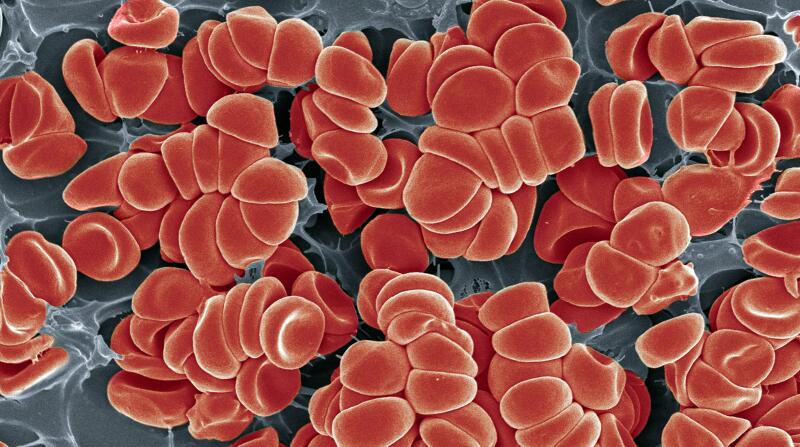Warning Signs of a DVT Blood Clot in Your Leg

Medically Reviewed By William C. Lloyd III, MD, FACS
Written By Sarah Lewis, PharmD on September 18, 2020
-
 Recognizing a DVT blood clot early can prevent potential complications.Everyone needs to know about DVT (deep vein thrombosis) blood clots because anyone can get one. If your risk is higher than normal, you need to be especially diligent about paying attention to the warning signs. Catching the problem early and seeking prompt treatment can prevent dangerous complications. It can also help you avoid long-term problems and disability. But it’s not always easy to recognize DVT symptoms. In fact, some people experience very mild symptoms. They may not realize they have a potentially life-threatening disease. Here are the five symptoms you shouldn’t ignore.
Recognizing a DVT blood clot early can prevent potential complications.Everyone needs to know about DVT (deep vein thrombosis) blood clots because anyone can get one. If your risk is higher than normal, you need to be especially diligent about paying attention to the warning signs. Catching the problem early and seeking prompt treatment can prevent dangerous complications. It can also help you avoid long-term problems and disability. But it’s not always easy to recognize DVT symptoms. In fact, some people experience very mild symptoms. They may not realize they have a potentially life-threatening disease. Here are the five symptoms you shouldn’t ignore. -
 1. Leg SwellingPain is another warning sign of a DVT blood clot. Like swelling, it usually only affects one leg and commonly starts in the calf. The pain may feel more like soreness, tenderness or achiness rather than a stabbing kind of pain. You may notice the pain is worse when you are walking or standing for periods of time. People sometimes mistake the pain for a pulled muscle or another muscle injury. But pain from a DVT blood clot will tend to get worse and not better with time or rest.
1. Leg SwellingPain is another warning sign of a DVT blood clot. Like swelling, it usually only affects one leg and commonly starts in the calf. The pain may feel more like soreness, tenderness or achiness rather than a stabbing kind of pain. You may notice the pain is worse when you are walking or standing for periods of time. People sometimes mistake the pain for a pulled muscle or another muscle injury. But pain from a DVT blood clot will tend to get worse and not better with time or rest. -
-
 2. Leg PainPain is another warning sign of a DVT blood clot. Like swelling, it usually only affects one leg and commonly starts in the calf. The pain may feel more like soreness, tenderness or achiness rather than a stabbing kind of pain. You may notice the pain is worse when you are walking or standing for periods of time. People sometimes mistake the pain for a pulled muscle or another muscle injury. But pain from a DVT blood clot will tend to get worse and not better with time or rest.
2. Leg PainPain is another warning sign of a DVT blood clot. Like swelling, it usually only affects one leg and commonly starts in the calf. The pain may feel more like soreness, tenderness or achiness rather than a stabbing kind of pain. You may notice the pain is worse when you are walking or standing for periods of time. People sometimes mistake the pain for a pulled muscle or another muscle injury. But pain from a DVT blood clot will tend to get worse and not better with time or rest. -
 3. Muscle CrampingMost people have experienced muscle cramping in a leg at some point in time. Typically, it’s a charley horse that strikes at night and only lasts a few minutes. A DVT blood clot can cause a calf cramp that feels a lot like a charley horse. Like leg pain, the cramping sensation with DVT will persist and even worsen with time. It won’t clear up with stretching or walking it off like an ordinary charley horse. Some people get thigh cramps or feel a throbbing sensation along with the cramping.
3. Muscle CrampingMost people have experienced muscle cramping in a leg at some point in time. Typically, it’s a charley horse that strikes at night and only lasts a few minutes. A DVT blood clot can cause a calf cramp that feels a lot like a charley horse. Like leg pain, the cramping sensation with DVT will persist and even worsen with time. It won’t clear up with stretching or walking it off like an ordinary charley horse. Some people get thigh cramps or feel a throbbing sensation along with the cramping. -
 4. Skin WarmthMany of the symptoms of DVT are due to blocked blood flow. Skin warmth is one of them. This is because instead of blood circulating normally, it backs up and fills progressively more of the outer veins, which warms the area. The skin in the region of a DVT blood clot may feel warm to the touch. The warmth may be limited to the area right over the vein. It may be noticeably warmer than surrounding skin that has a normal temperature. Sometimes, the whole calf or limb will be warmer than the other one.
4. Skin WarmthMany of the symptoms of DVT are due to blocked blood flow. Skin warmth is one of them. This is because instead of blood circulating normally, it backs up and fills progressively more of the outer veins, which warms the area. The skin in the region of a DVT blood clot may feel warm to the touch. The warmth may be limited to the area right over the vein. It may be noticeably warmer than surrounding skin that has a normal temperature. Sometimes, the whole calf or limb will be warmer than the other one. -
 5. Color ChangesA DVT blood clot can cause color changes in the skin over and surrounding the vein. You may notice skin redness along with the pain or swelling. But the skin can also have different discolorations, such as a bluish or dark appearance. This is due to blocked blood flow in the area. Like other DVT symptoms, the color change will persist instead of resolving with time.
5. Color ChangesA DVT blood clot can cause color changes in the skin over and surrounding the vein. You may notice skin redness along with the pain or swelling. But the skin can also have different discolorations, such as a bluish or dark appearance. This is due to blocked blood flow in the area. Like other DVT symptoms, the color change will persist instead of resolving with time. -
-
 Seek immediate medical care if you suspect a DVT blood clot.Many of the symptoms of DVT, such as redness, swelling and pain, are common to other conditions. However, a DVT blood clot is a medical emergency. It can lead to a life-threatening complication called a pulmonary embolism (PE). If you have symptoms that could mean a blood clot, err on the side of caution and seek immediate medical care. It’s better to get care and it turn out to be nothing serious than to delay care and risk your health, or even your life.
Seek immediate medical care if you suspect a DVT blood clot.Many of the symptoms of DVT, such as redness, swelling and pain, are common to other conditions. However, a DVT blood clot is a medical emergency. It can lead to a life-threatening complication called a pulmonary embolism (PE). If you have symptoms that could mean a blood clot, err on the side of caution and seek immediate medical care. It’s better to get care and it turn out to be nothing serious than to delay care and risk your health, or even your life.
Know the 5 Warning Signs of a DVT Blood Clot in Your Leg



























